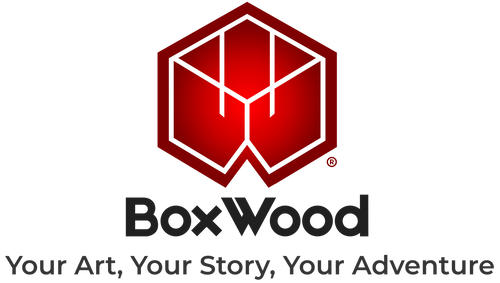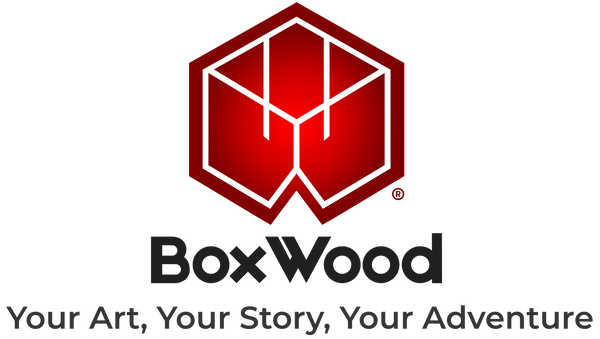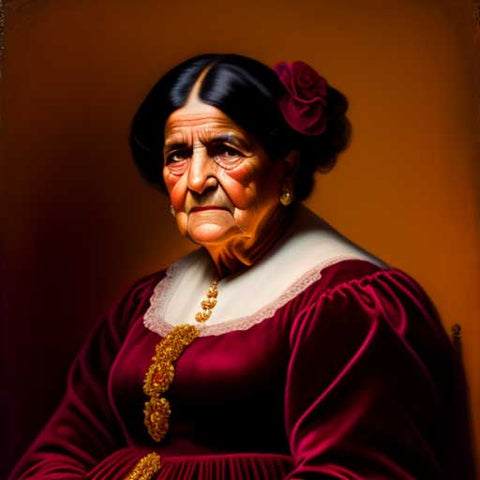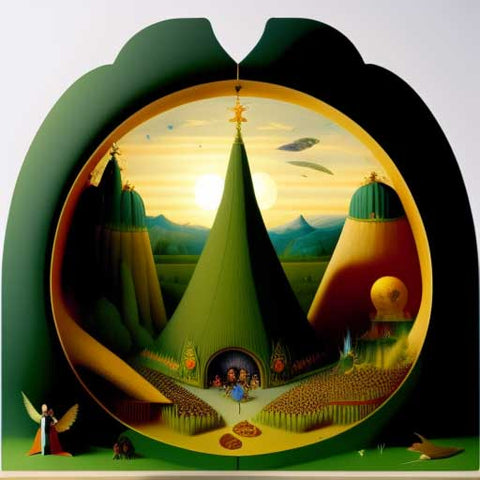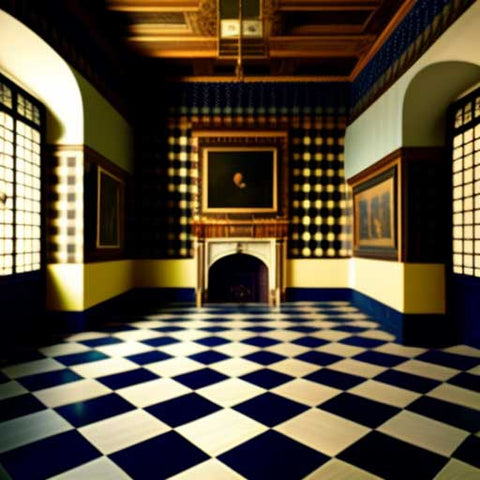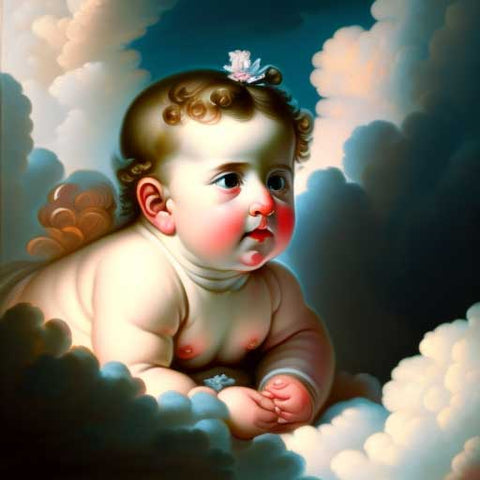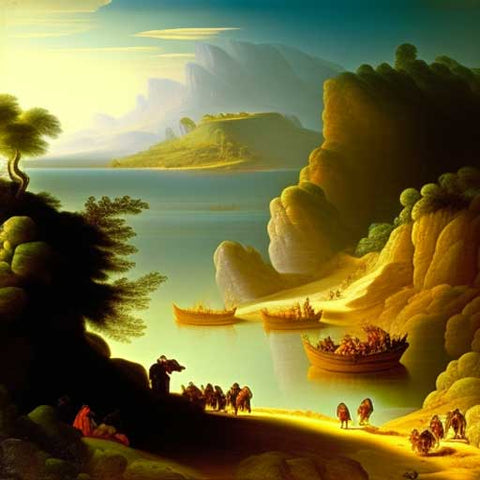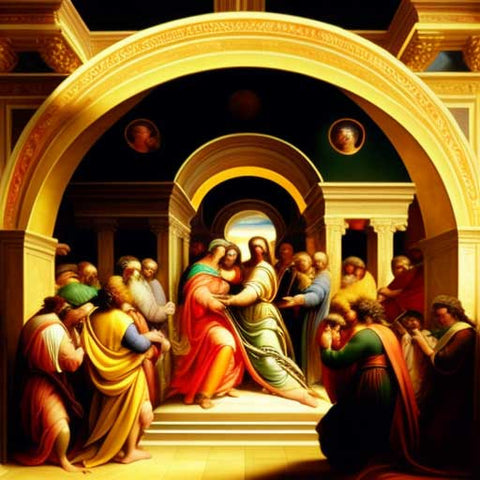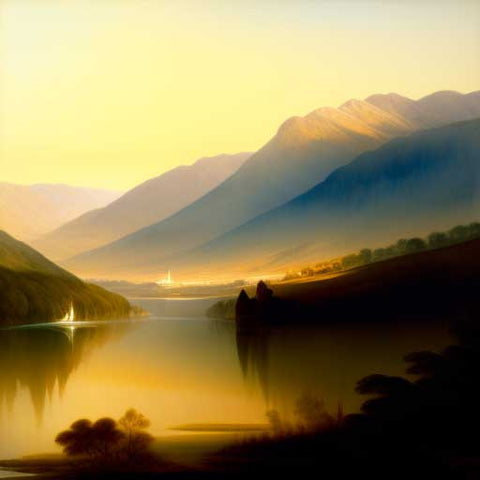Is AI Art the New Jurassic Park? When we think of AI Art what’s there to be worried about? It’s just another form of art, right? Jeff Goldblum’s character Dr. Malcolm said it best in Jurassic Park when he says, “Yeah, but your scientists were so preoccupied with whether or not they could that they didn’t stop to think if they should.” Did the creators of AI tools really question the ramifications of what they were working on? Would the perfect AI kill art?
Stephan Hawking, known for his work on black holes and relativity, was regarded as one of the most brilliant theoretical physicists since Albert Einstein. He expressed his thoughts on AI technology on several occasions. "The development of full artificial intelligence could spell the end of the human race," the cosmologist told BBC News in 2014. “I fear that AI may replace humans altogether. If people design computer viruses, someone will design AI that improves and replicates itself. This will be a new form of life that outperforms humans," he told The Economic Times.
Elon Musk
Ai generated art by Gratis Graphics
Elon Musk has also expressed his warnings about AI. During a recent two-part interview with Tucker Carlson, Musk said that “AI is more dangerous than, say, mismanaged aircraft design or production maintenance or bad car production” and that “it has the potential of civilization destruction.”
Throughout history, concerns regarding the implications of automation and emerging technologies are nothing new. However, when some of history's brightest minds raise valid concerns, it may be crucial to heed their warnings and contemplate the potential challenges posed by these new technologies, along with possible solutions.
Many of us readily embrace such technology for its convenience and enjoyment, often overlooking the possible consequences. With only a few realizing the more we use it the stronger it gets.
Historically, new and innovative tools in the world of art, such as the camera obscura, camera lucida, the camera, and digital painting, faced opposition from artists and critics who believed they might compromise artistic integrity, erode individual style, dehumanize art, and prioritize replication over subjective expression.
Ai generated art by
Alphonse Mucha – in the style of Alphonse Mucha’s Art nouveau
Conversely, with AI technology, while a few vehemently oppose it, overall advertisements would have us believe it has been well received, and it’s easy to see why. It significantly reduces workloads, resolves employee issues for businesses, streamlines thousands of tasks, and finds widespread application across various fields.
Regardless, like any decision, adopting AI technologies entails consequences that could in this case be the beginning of the end. Destroying civilization all together.
Ai generated art by
Francisco Goya – in the style of Francisco Goya’s Time of the Old Women, senior woman, opulently dressed
LEGAL CONSEQUENCES
Copyright law does not specify a specific percentage or degree of difference that a new piece of artwork must have from the original artwork in order to avoid copyright infringement. Instead, copyright law focuses on the concept of "originality" and "substantial similarity."
In general, for a new piece of artwork to be considered an original work and not infringe upon the copyright of the original artwork, it should be independently created by the artist and not be a direct copy of the original. It should also not reproduce a substantial and protectable portion of the original work.
Ai generated art by
Hieronymus Bosch – fantasy scene of a rock concert in the style of the Garden of Earthly Delights by Hieronymus Bosch, bright sunlight
In this case we are not dealing with the exact copy of a work of art, but where a work of art has been taken and manipulated to mimic how a specific artist would draw or paint. AI tools mimic a specified artist’s drawing and brush strokes. Resulting in the overall look of a piece of artwork being a direct copy of the artist it copied from. A new and different form of copy all together through an algorithm.
With that said can you copyright AI generated Art? Do the laws need to be updated? It seems that AI art companies that have created these AI art tools have stolen millions of pieces of artwork from thousands / millions of artists throughout history in order to facilitate the creation of a piece of an AI generated piece of art. It’s become such a problem there are several lawsuits that have risen from it. Can you really copyright something that takes the work from millions of artists throughout history and condenses it down to one piece in a matter of minutes from a few clicks on a keyboard? Is that fair to the original creator of their work of art that took a lifetime to develop that skill and ability?
Ai generated art by
Johannes Vermeer – interior room in the design of Johannes Vermeer, checkered floors
On August 18th, 2023 a US federal judge ruled that ai generated art is not protected by copyright law. A decision also endorsed by the Copyright Office because it lacks human involvement. The Copyright Office has stated that copyright protection is exclusively granted to creations originating from human individuals, excluding supernatural entities, animals, and computer programs.
In an article, “Artists Up in Arms Over New AI Model That Can Generate Similar Works,” Stabile Diffusion AI CEO and founder Emad Mostaque explains how their AI tool works and argues that it is extremely slim that an AI tool can memorize substantial parts of specific works of art. It’s not about memorizing the art, but that it has to use artwork from another artist in a database to create the AI generated art in the first place. Besides, how can we trust how these AI tools actually work and what is being said on how they work when in order for them to work properly they had to scrape the internet for the art in the first place. How do we know if an artist’s artwork has been stolen and used to create AI generated art? How do we know what percentage of the piece was stolen? How can we resolve the theft of millions of artists' artwork?
“I’LL NEVER LOSE MY JOB TO AI TECHNOLOGY.”
The rise of AI technology, particularly in the field of art, has sparked concerns about the devaluation of artwork and the potential loss of jobs. As AI models create art, there is a debate on whether this devalues the work of human artists. As seen more recently, when machines take over tasks that were previously performed by humans, it can lead to job loss and job insecurity. This displacement can cause anxiety, stress, and a decline in job satisfaction for those affected.
Ai generated art by
François Boucher – in the romantic style of François Boucher’s Love Target, chubby angels, light and bright
It is argued by many that AI art will devalue artwork from an artist. Since art is subjective this ultimately comes down to the person buying the artwork. The disclosure of AI involvement in art creation is a matter of consumer rights, as buyers may wish to know the origin of the artwork.
The debate also extends beyond the art world, as AI technology threatens job security in various industries. Employers are tempted to replace human workers with AI to save on costs, improve efficiency, and eliminate concerns related to employee behavior and performance. This shift to AI-driven solutions could lead to job displacement and anxiety among workers. As a result, the advantages and disadvantages of AI technology are a critical issue in the art world and various other sectors.
Should AI generated art be required by law to show how it was created? The same way the tobacco industry had to put on the cigarette cartons “SURGEON GENERAL'S WARNING: Smoking Causes Lung Cancer, Heart Disease, Emphysema, and May Complicate Pregnancy.” Do customers have the right to know? Would you want to buy from an artist that was withholding that information from you?
DEPENDENCY ON AI
Man throughout history has become more efficient and developed tools and things to make life easier. Hugo Weaving's character Mr. Smith in the Matrix says, “I say your civilization, because as soon as we started thinking for you it really became our civilization, which is of course what this is all about.” Is Ai technology enhancing human productivity or has it become a tool that has made us more lazy?
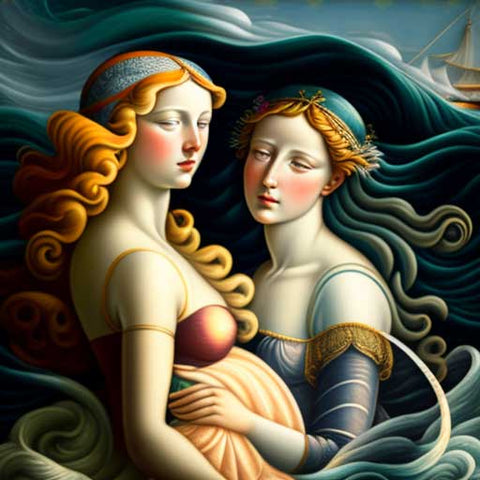
Ai generated art by
Sandro Botticelli – nautical scene in the style of Sandro Botticelli’s Birth of Venus, mystical, light and bright
Who’s making the decisions? Who’s thinking for who? As society becomes more comfortable with the use of AI in our day to day lives it replaces the decisions we would’ve made with it’s decisions. As a result, leading to less human autonomy and responsibilities. In turn having a direct impact on job fulfillment and happiness. “If you don’t use it you’ll loose it.” Will our brains eventually shrivel up from not being used?
A widely cited study by Frey and Osborne (2013) titled "The Future of Employment: How Susceptible Are Jobs to Computerization?*” According to their estimates, about 47 per cent of total US employment is at risk. They further provide evidence that wages and educational attainment exhibit a strong negative relationship with an occupation’s probability of computerization.
Is creating artwork something that we need to assign an AI model to think and paint for us? Doesn’t that remove the creative component from art”work”? Can we even call AI generated art “art?” In order for an AI tool to create art does it really involve the creativity of a human to create? Do we need to redefine art or make separate definitions all together for AI generated art?
Ai generated art by
Salvator Rosa – landscape background in the style of Salvator Rosa’s A Coastal Landscape With Soldiers Resting and Conversing, light and bright
MOLDING A TALENT
“It’s only artwork right? It’s only an artist right? Artists don’t actually make any money anyways so what does it matter if I use AI generated art? My grandkids create artwork better than these “artist pros,” so who cares. Artists are a dying breed, why would I buy hand painted artwork from an independent artist when anyone can create AI generated art with a few clicks of a keyboard. It’s not like they have any rights, Besides what can artists do against these massive AI Art companies? Who cares, what does it matter? They don’t have any rights, do they?”
What does it mean to be an artist in the world today? The artworld is such a saturated and competitive field. Some artists spend their entire lives developing their talent in art and never sell one piece of artwork.
Many artists spend countless hours honing their craft through self study, apprenticeships, or school that takes years to reach the point of mastery (“Outliers: The Story of Success” by Malcom Gladwell and “Mastery” by Robert Greene. - (I do not get any sort of financial compensation or credit if you purchase those books through those links). It’s even been revealed in an academic survey conducted by HEPI in 2015 that artists work harder than attorneys in school! Thomas Connelly also refers to the study in his article, “Art students work harder than Law students, stats reveal.” Now take into consideration when was the last time a parent, family member or friend took someone seriously when they said they wanted to become an artist as their chosen profession. The physical and mental struggles it takes to climb that massive mental mountain is hard to fathom.
To put it in perspective, in an article “How do artists make a living? An ongoing, almost impossible quest” by Monica Brine, only ten percent of art school graduates make a living from their artwork!
Imagine being a part of the lucky ten percent who eventually reach the level of Mastery, a “Jedi” in art that are able to make a living from selling their artwork. An artist that possesses the ability to create a painting that can speak to the core of a person’s soul. An artist that is making a living supporting their family from the artwork they create. Only to have an AI generated art tool copy your masterpiece and store it in an AI database that it draws from to copy your art anytime a keyboard prompt from one of their users requires it. Stolen, right out from under your nose with the few clicks of a keyboard and using it to make an AI generated piece of art that someone else sells, profiting from an artist’s misfortune.
Would you feel comfortable knowing the art you purchased hanging on your walls was made with stolen artwork from an artist trying to make a living selling their own artwork? Would you still feel special sharing your newly made AI generated art that anyone can create with your friends and family?
Again I raise the question. For those who enjoy and collect art, should AI artists that sell their AI generated art have to put a label on it? Such as; “This is AI generated art,” or, “This is made with Stolen ART?” The same way the tobacco industry had to put on the cigarette cartons “SURGEON GENERAL'S WARNING: Smoking Causes Lung Cancer, Heart Disease, Emphysema, and May Complicate Pregnancy.”
Ai generated art by
Raphael – in the style of Raphael’s School of Athens fresco painting, colored illustration, light and bright, gathering of people, gold, arches
Conclusion
In the ongoing debate surrounding AI's role in art, it is clear that this transformative technology presents both immense opportunities and complex challenges. The question of whether AI is the canvas of creation or the easel of extinction remains at the forefront of discussions. Influential voices like Stephen Hawking and Elon Musk have issued sobering warnings about the potential risks AI poses, emphasizing the need for thoughtful consideration and ethical safeguards.
As AI-generated art gains widespread acceptance and application, it streamlines processes, reduces workloads, and offers unprecedented convenience. However, these advancements raise pertinent questions about copyright laws, job displacement, and the ethical dimensions of art creation. The recent ruling by a US federal judge, stating that AI-generated art is not protected by copyright law due to its lack of human involvement, further complicates the landscape.
The ethical considerations surrounding AI-generated art are multifaceted. Consumers deserve transparency about the origins of artwork, and the impact on human artists should be thoughtfully examined. The question of whether AI-generated art can be labeled as "art" in the traditional sense is one that needs careful contemplation.
Moreover, the potential loss of jobs due to AI's increasing role in the creative process brings to light the broader implications of AI technology on employment and human autonomy. The shift towards AI-driven solutions in various industries demands a reevaluation of our societal values and priorities.
Ai generated art by
Joseph Mallord William Turner – create an overexposed landscape painting in light pale colors in the style of Oberwesel by Joseph Mallord William Turner, watercolor, gouache
In conclusion, the collision between AI and art is a complex issue, and there are no easy answers. It is essential that we continue to engage in open, informed discussions about the role of AI in art and its implications for artists, consumers, and society as a whole and how to address and solve the problems created. Whether AI becomes a force for creation or a catalyst for extinction depends on our collective responsibility and thoughtful regulation in the face of rapid technological advancement.
I think where this gets really interesting is ai’s ability to potentially replicate real or digital currency around the world both digital and real. What is to stop AI art in the wrong hands from doing that?
I know I gave credit throughout the article, but I want to say a big thank you to Tara Jacobsen for giving me permission to use several of her AI art generated images.
